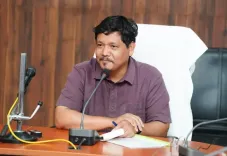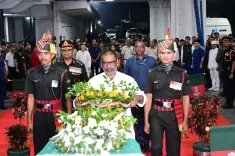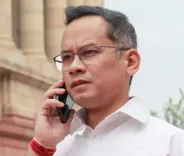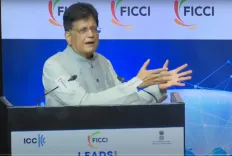How Will NDA CMs Shape the Vision for ‘Viksit Bharat’?
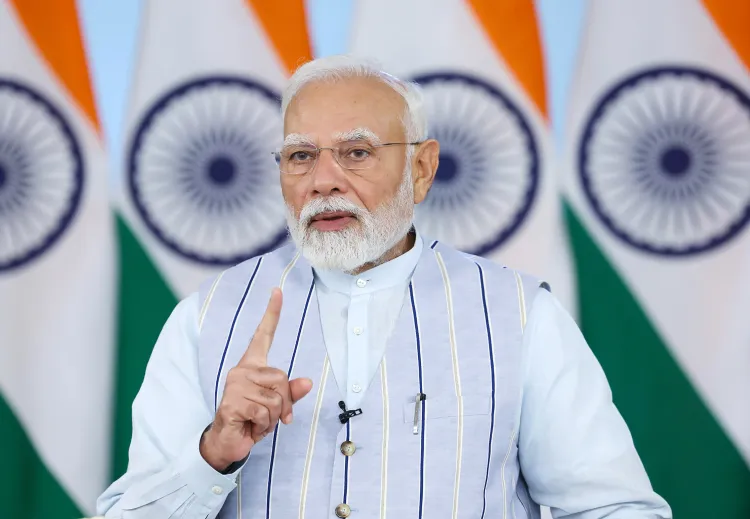
Synopsis
Key Takeaways
- Prime Minister Modi will chair a meeting focusing on 'Viksit Bharat' by 2047.
- States must develop unique plans aligned with national objectives.
- Emphasis on sustainable economic growth and social equity.
- Discussion on enhancing state-level institutional capacities.
- Focus on youth and marginalized communities for inclusive governance.
New Delhi, May 24 (NationPress) Tomorrow, a significant meeting will take place in New Delhi, led by Prime Minister Narendra Modi, where Chief Ministers of the National Democratic Alliance (NDA) will gather to discuss the vision and strategic action plan for realizing Viksit Bharat by 2047. Central to this assembly is the principle that the journey towards a developed India hinges on the progress of its states—Viksit Rajya for Viksit Bharat.
This gathering is particularly vital as it coincides with a period when India is experiencing a robust transformation in both economic and governance sectors. The next twenty years represent a pivotal opportunity for the nation to elevate its status from a developing country to a dominant global economic and political force.
The main focus of the discussions will be how each state can significantly contribute to India's goal of becoming a $30 trillion economy by 2047.
The Prime Minister is anticipated to highlight the necessity for states to develop bold, inclusive, and forward-thinking vision plans that resonate with national objectives while being rooted in local contexts. As most states are progressing with their own Viksit Rajya plans for 2047, this meeting aims to facilitate the exchange of achievements, best practices, and obstacles faced.
A primary focus will be on ensuring that each state establishes clear objectives across various domains, including economic, social, and environmental aspects. These objectives encompass growth in Gross State Domestic Product (GSDP), job creation, improvements in health and education, gender equity, climate resilience, and securing water and energy resources. States will be encouraged to adopt a SOAR (Strengths, Opportunities, Aspirations, and Results) framework, transitioning the developmental perspective from limitations to capabilities and measurable outcomes.
The meeting will also evaluate the progress of existing transformational schemes that have made a significant impact on lives nationwide—such as Swachh Bharat, Ujjwala Yojana, PM Awas Yojana, and Jal Jeevan Mission. With over Rs 36 lakh crore in direct social benefits provided to more than 100 crore citizens, the focus will now shift to enhancing this impact at the community level.
Another key area of discussion will be the enhancement of state-level institutional capacity for effective implementation. The Prime Minister is likely to urge Chief Ministers to establish dedicated Project Monitoring Units (PMUs), real-time War Rooms, and Monitoring and Evaluation Cells to ensure the transparent and accountable delivery of programs. States will also be encouraged to consider creating their own state-level versions of NITI Aayog to aid in long-term planning and coordination.
In terms of economic reforms, the agenda will emphasize the importance of fiscal discipline, resource mobilization, deregulation, and the creation of investment-friendly environments. The shared objective is not only to position India as the third-largest economy in the world by 2027–28 but also to guarantee that the benefits of this growth reach every individual, village, and city.
The perspectives of India's youth will feature prominently in the discussions, with the Prime Minister expected to highlight the success of the “Voice of Youth” campaign, which collected over 10.5 lakh suggestions for Viksit Bharat, nearly half of which came from young women. The importance of the youth, women, and underrepresented communities in fostering a developed India will be underscored as an essential aspect of inclusive governance.
In conclusion, the upcoming NDA Chief Ministers’ meeting is not merely an administrative task—it is a call to action. It will reinforce the conviction that the path to a prosperous and globally esteemed India will be shaped not solely by the Centre, but through the collective vision, execution, and ambition of each state.
As Prime Minister Narendra Modi has consistently stated, “The roadmap of progress will not be determined by the government alone, but by the nation. Viksit Bharat must be constructed through Sabka Prayas.” This meeting could potentially mark a significant milestone in that national journey.

